If you’ve read a bit about the history of Tainan, you’ll have heard of Taijiang Inner Sea (臺江內海). Hundreds of years ago, when southern Taiwan’s coastline wasn’t as far west as it is now, this lagoon covered much of present-day Annan (安南) and Chiku (七股) districts.
In 1823, torrential rains shifted so much sediment that the islands at the mouth of the inland sea began to coalesce. Because this reduced the speed of river water flowing through the lagoon, silt carried down from the mountains started to accumulate.
The area navigable by anything other than a raft gradually shrank, and parts of the inland sea were converted into fish farms. Chiku Lagoon (七股潟湖) is the largest remnant waterbody of the inland sea. Much of the rest has been filled in and built on.
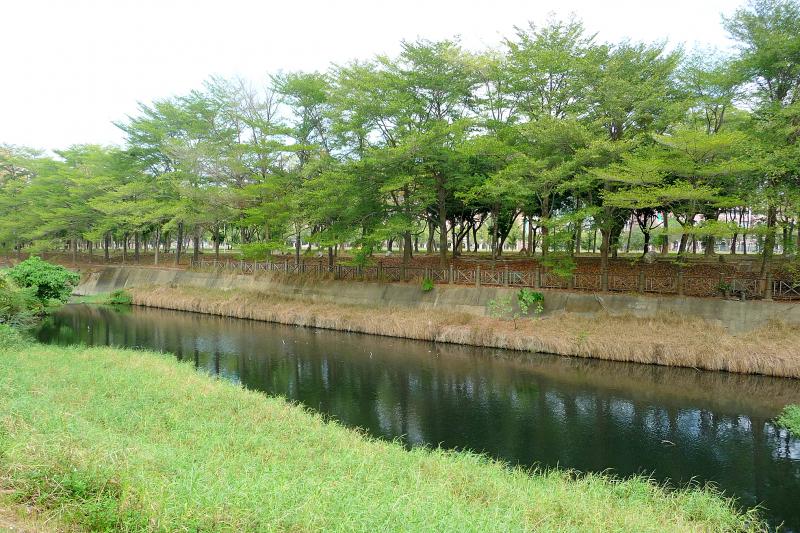
Photo: Steven Crook
Further north, there used to be another sizable lagoon. Called Daofeng Inner Sea (倒風內海), it was separated from Taijiang Inland Sea by Soulangh Peninsula (蕭?半島). From before the 1624-1662 period of Dutch rule to well into the subsequent Qing era, that peninsula was home to the Soulangh branch of the Siraya lowland Aboriginal tribe.
DAOFENG INNER SEA MUSEUM
Soulangh Cultural Park in Tainan’s Jiali District (佳里) preserves the peninsula’s toponym, while Daofeng Inner Sea Museum (倒風內海故事館) in neighboring Madou District (麻豆) celebrates the region’s history.
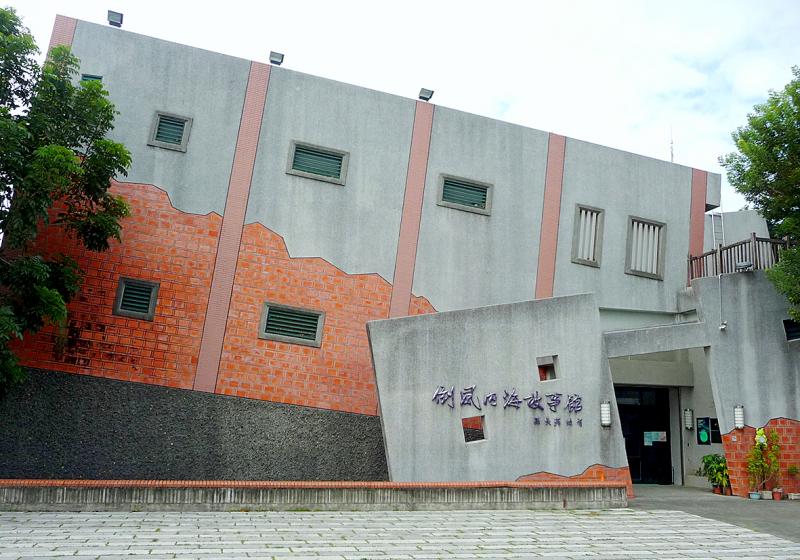
Photo: Steven Crook
The museum, which is on the north side of Road 176, a few hundred meters west of Expressway 84, is open Wednesday to Sunday, 9am to 5pm. Admission is free.
During its heyday as a transshipment center, which lasted until siltation became a problem in the 1730s, Daofeng Inland Sea provided access to a number of ports. Yuejin (月津) in the historic town of Yanshuei (鹽水) was the most important. At one point, Yuejin was so bustling that local people, expanding a famous idiom which ranked Taiwan’s top three harbor-settlements, boasted: “First, Tainan; second, Lukang; third, Bangkah [modern-day Wanhua in Taipei], fourth, Yuejin,” (一府二鹿三艋舺四月津).
However, the museum goes well beyond the Qing period. The first floor exhibits local archaeological finds, including bronze arrowheads, ceramic fragments, stone cutting tools and stone fishing-net sinkers from the Niaosong (蔦松) culture, which existed from approximately 1,900 years before present to the Dutch occupation.
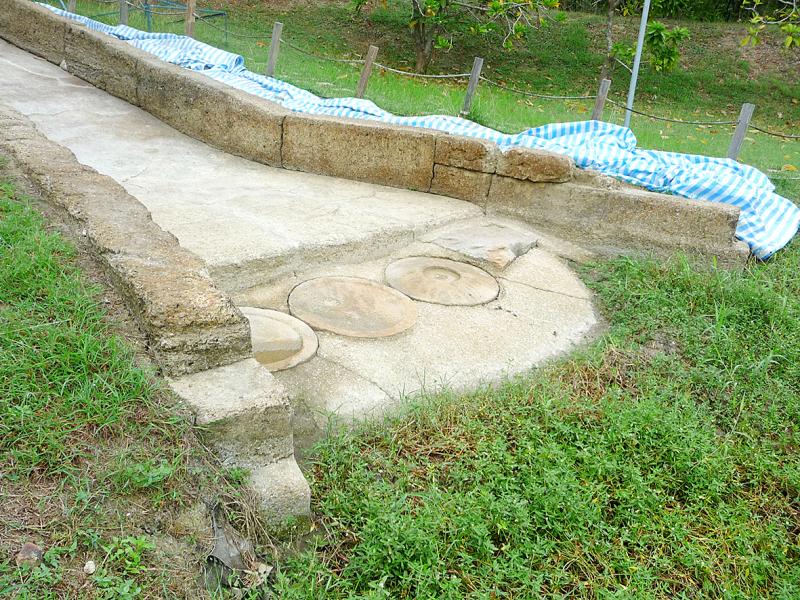
Photo: Steven Crook
Stone spear tips produced by the even more ancient Tahu (大湖) culture are displayed here — but, like almost everything in the museum, they’re labeled in Chinese only.
One of the most delicate pieces is a thinned-wall pot scarcely bigger than an egg. Large fragments prove that this region’s ancient residents could also make vessels big enough to hold several liters of water. Most striking of all is the skeleton of a horse.
The third floor features pieces of Chinese porcelain, and some innovations which the Dutch brought to Taiwan. The most interesting of these is a glass-ball float for fishing nets.
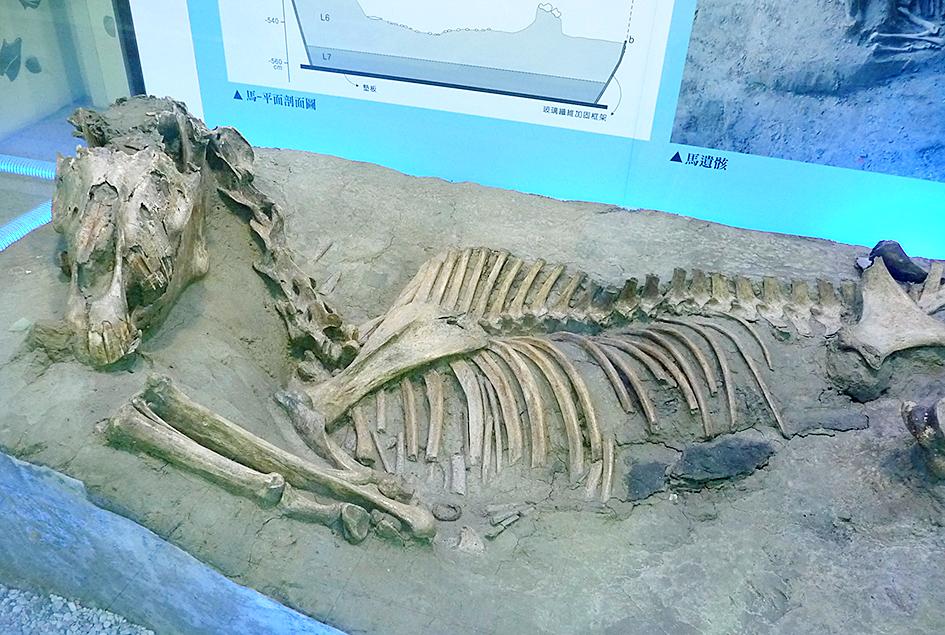
Phots: Steven Crook
If you read Chinese, you’ll be able to learn a lot about lowland Aboriginal material culture, including the bamboo flutes they played and the reticules in which they carried betel nut. History panels describe violent Dutch-Aboriginal clashes in 1629 and 1635, and the Dutch coercing Aborigines to attend Christian schools and grow cash crops to benefit the Dutch East India Company.
There’s also a lack of English in the adjacent Madou Old Port Cultural Park, where the main sight is a restored stone-paved slipway by which boats could be hauled out of or lowered into Daofeng Inland Sea. The park is open around the clock, and there’s no admission charge.
The wharf here was built using stones and recycled bricks, cemented together with a mixture of oyster-shell ash, syrup and glutinous rice — a common construction technique in the 17th and 18th centuries. At the time of my visit, the waterway was suspiciously black and still. However, I saw some fish-hunting birds, so it can’t be totally dead.
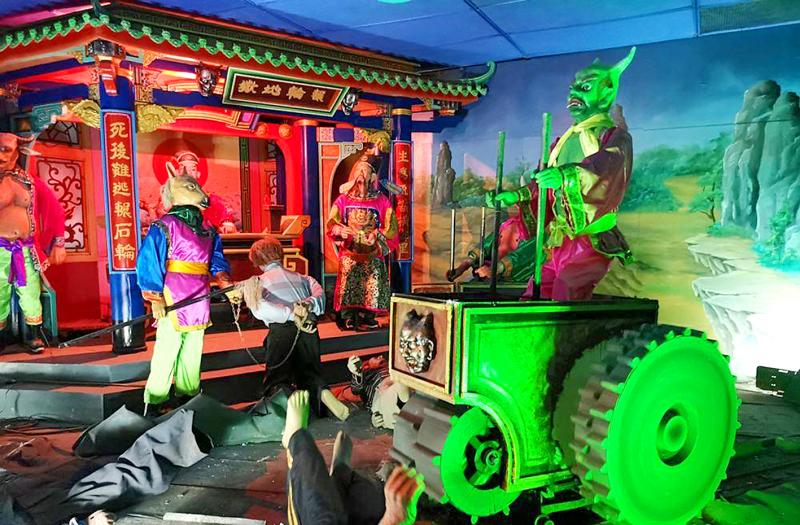
Photo courtesy of Hotainnan
After exploring the park, I drove a short distance to the town’s best-known house of worship. Like many other shrines in the southwest, Madou Daitian Temple (麻豆代天府) is dedicated to wangye (王爺) spirits. The five here are surnamed Li (李), Chih (池), Wu (吳), Jhu (朱), and Fan (范).
18 LEVELS OF HELL
Directly behind the temple, there’s a most unusual attraction. The Eighteen Levels of Hell (十八層地獄) was created in the 1970s to both generate revenue and reinforce moral teachings. If you’re hoping for detailed lessons in Chinese traditional theology, you’ll be disappointed. But for kitschy entertainment, it’s worth the NT$40 admission charge. Children get in for half price, but I’m not sure bringing young kids here would be a good idea — they could find the grotesque animatronic figures that populate this 76m-long tunnel genuinely terrifying.
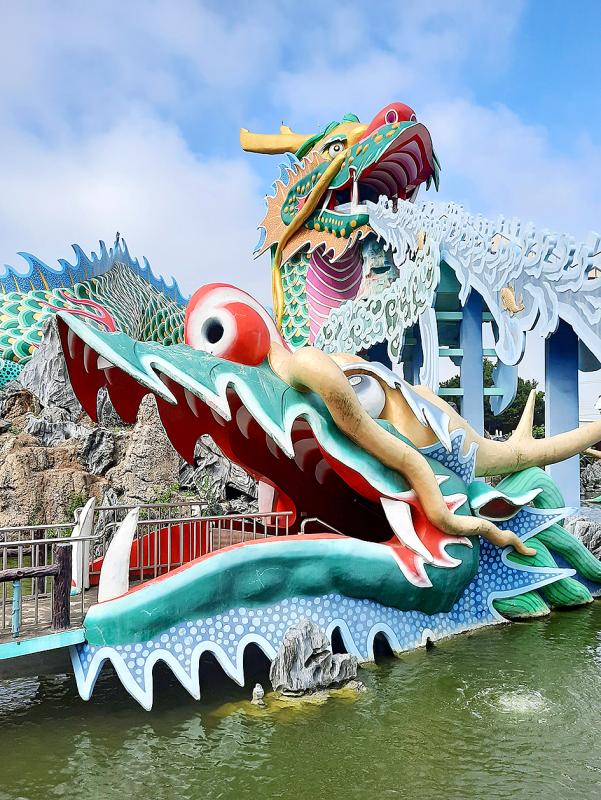
Photo: Steven Crook
At each mises-en-scene, a short bilingual introduction sets out what types of sinner are being dealt with at that level of hell, and the punishment meted out to them.
On the second level, “corrupt officials who abuse their power, and torment and badger the people” face decapitation. On the sixth, makers of adulterated medicines and wines “should be fried in cauldrons of oil.” On the thirteenth, women “who willfully disobey” their parents-in-law can expect to be crushed beneath rocks.
When a visitor triggers a motion sensor, the nearest depiction comes to life. Recorded dialogs, entirely in Hokkien, feature the pronouncements of stern judges and the pleadings and screams of the accused. Creaking devil-mannequins then disembowel, gore, grind up or skin wrongdoers. There’s no danger of the message being too subtle for people to grasp.
If you’re willing to pay another NT$40, you can visit the above-ground depiction of Taoist Heaven. Don’t bother: Heaven isn’t half so interesting as hell.
Steven Crook has been writing about travel, culture and business in Taiwan since 1996. He is the author of Taiwan: The Bradt Travel Guide and co-author of A Culinary History of Taipei: Beyond Pork and Ponlai.

In the March 9 edition of the Taipei Times a piece by Ninon Godefroy ran with the headine “The quiet, gentle rhythm of Taiwan.” It started with the line “Taiwan is a small, humble place. There is no Eiffel Tower, no pyramids — no singular attraction that draws the world’s attention.” I laughed out loud at that. This was out of no disrespect for the author or the piece, which made some interesting analogies and good points about how both Din Tai Fung’s and Taiwan Semiconductor Manufacturing Co’s (TSMC, 台積電) meticulous attention to detail and quality are not quite up to

April 21 to April 27 Hsieh Er’s (謝娥) political fortunes were rising fast after she got out of jail and joined the Chinese Nationalist Party (KMT) in December 1945. Not only did she hold key positions in various committees, she was elected the only woman on the Taipei City Council and headed to Nanjing in 1946 as the sole Taiwanese female representative to the National Constituent Assembly. With the support of first lady Soong May-ling (宋美齡), she started the Taipei Women’s Association and Taiwan Provincial Women’s Association, where she

Chinese Nationalist Party (KMT) Chairman Eric Chu (朱立倫) hatched a bold plan to charge forward and seize the initiative when he held a protest in front of the Taipei City Prosecutors’ Office. Though risky, because illegal, its success would help tackle at least six problems facing both himself and the KMT. What he did not see coming was Taipei Mayor Chiang Wan-an (將萬安) tripping him up out of the gate. In spite of Chu being the most consequential and successful KMT chairman since the early 2010s — arguably saving the party from financial ruin and restoring its electoral viability —

It is one of the more remarkable facts of Taiwan history that it was never occupied or claimed by any of the numerous kingdoms of southern China — Han or otherwise — that lay just across the water from it. None of their brilliant ministers ever discovered that Taiwan was a “core interest” of the state whose annexation was “inevitable.” As Paul Kua notes in an excellent monograph laying out how the Portuguese gave Taiwan the name “Formosa,” the first Europeans to express an interest in occupying Taiwan were the Spanish. Tonio Andrade in his seminal work, How Taiwan Became Chinese,